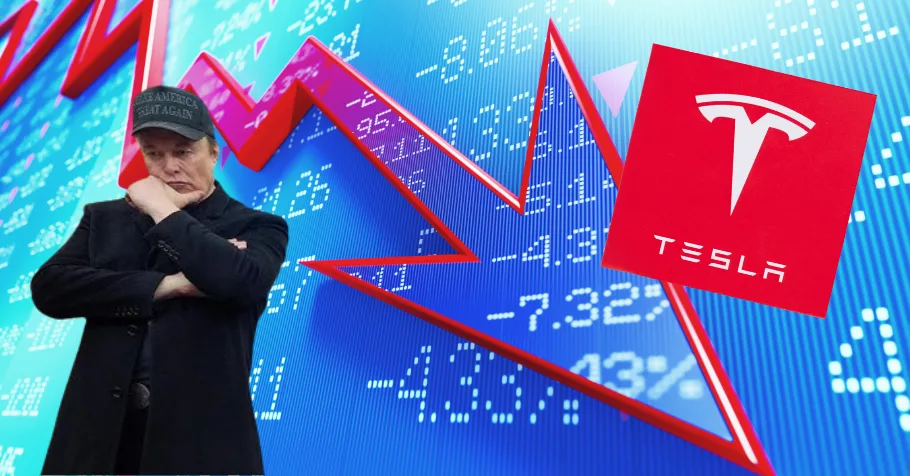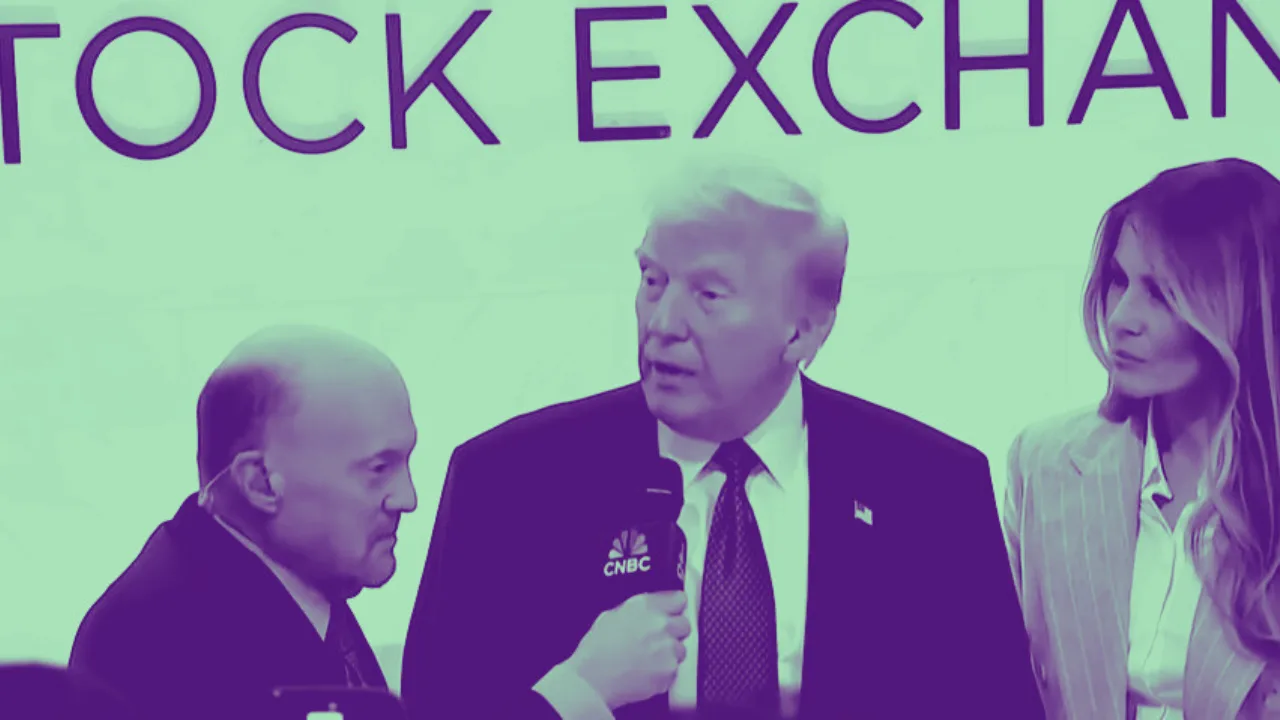Tesla Inc. stock declined sharply on Thursday, dropping roughly 4%, after CEO Elon Musk intensified his opposition to President Donald Trump’s massive federal spending bill. The selloff marks a notable break in what had been a strong May for Tesla, during which the stock rose 22%, partly buoyed by Musk’s exit from his short-term government post with the Trump administration.
Musk vs. Washington: Political Clash Sparks Market Reaction
In a series of fiery posts on his X (formerly Twitter) account, Musk called on lawmakers to “KILL” the legislation, labeling it a “disgusting abomination.” The bill in question, which includes controversial tax changes and spending reallocations, has emerged as a flashpoint between the tech billionaire and his former allies in the Trump administration.
Musk’s rhetoric has escalated significantly over the past week. Not only has he openly criticized the substance of the bill, but he’s also threatened to support primary challengers against Republicans who vote in favor of it.
The tension is especially noteworthy given Musk’s recent role in the Department of Government Efficiency (DOGE), a Trump-created agency aimed at reducing bureaucratic waste and improving federal tech systems. Musk concluded his temporary term last Friday and, shortly after, began ramping up his criticism of the administration.
Tesla’s Volatile Year: Rally in May, Drop in June
Tesla’s performance on the market has been turbulent in 2025. After a strong rally in May—despite soft vehicle delivery figures—shares are still down over 20% year-to-date. They remain well below their December 2024 high of $488.54.
The company is also grappling with declining demand in core markets like Germany and the United Kingdom, where consumer appetite for EVs has waned in the face of reduced subsidies, higher interest rates, and growing competition. Brand perception has also taken a hit in Western markets, with Musk’s polarizing public persona cited by marketing analysts as a contributing factor.
Fallout Over the Spending Bill
According to a report from The Wall Street Journal, President Trump is increasingly frustrated with Musk’s attacks, which some administration insiders say are “deeply unhelpful” as the White House tries to corral GOP support for the bill.
Musk had reportedly lobbied the administration to tweak or eliminate provisions in the legislation that would negatively impact Tesla’s core business—namely, reductions in EV tax credits and solar incentives, both of which contribute to Tesla’s bottom line.
NBC News reported that a particularly contentious measure would impose a $250 annual fee on electric vehicle drivers, a move Musk sees as punitive and anti-innovation.
Internal and External Pressures Mount
Beyond the political clash, Tesla faces mounting pressure to deliver on promises of autonomous driving. The company previously announced plans to launch a driverless ride-hailing service in Austin, Texas, by mid-2025. While Musk claims internal testing is already underway, rival Waymo has beat Tesla to the punch, operating a fully commercial robotaxi fleet in Austin in partnership with Uber.
Analysts have flagged this as a make-or-break moment for Tesla’s autonomy vision. “If Tesla doesn’t deliver something tangible this summer, it risks falling behind in the AV race,” said Dan Ives of Wedbush Securities.
Meanwhile, Musk’s frustration with the Trump administration appears to be compounded by unrelated tensions—particularly around Jared Isaacman, a close Musk ally and two-time SpaceX mission commander.
According to biographer Walter Isaacson, who appeared on CNBC’s Squawk Box, Musk is “seriously upset” that members of the Trump administration opposed Isaacman’s rumored nomination to lead NASA. Isaacson said, “That, to Musk, was just infuriating… they were going after Jared to get at Musk.”
Isaacman, the billionaire CEO of Shift4, has invested millions into SpaceX and led two private orbital missions in 2021 and 2024. His growing clout in the private space sector has made him a high-profile figure—and, apparently, a political target.
Investor Takeaways
Musk’s clash with the Trump administration is more than a political sideshow—it carries direct implications for Tesla investors. If the spending bill passes as-is, reduced subsidies and new EV fees could dent Tesla’s U.S. sales outlook. The robotaxi rollout delay and competition from Waymo add further downside risk.
For long-term investors, the key issues to watch include:
- Regulatory headwinds: Any reductions in tax credits or increases in fees directly impact Tesla’s pricing power.
- Autonomy rollout: Progress (or lack thereof) in Austin could swing sentiment dramatically.
- Brand damage: Musk’s political fights may further polarize consumers and investors alike.
Tesla has weathered storms before, but 2025 is shaping up to be one of its most politically fraught years yet.
Final Word
The market’s reaction to Musk’s escalating feud with the Trump administration reflects how deeply interconnected policy, personality, and profits have become in the Tesla story. Whether Musk’s lobbying succeeds or backfires remains to be seen—but one thing’s clear: investors should buckle up.
As always, monitor Tesla’s upcoming earnings report, follow updates from Capitol Hill, and stay tuned for developments on the autonomous driving front.
Global Sales Pressure: Europe, China, and Beyond
Tesla’s struggles extend well beyond Washington. In Europe, Tesla has been rapidly losing market share to more affordable electric models from traditional automakers such as Volkswagen, Renault, and Stellantis. Germany, once a pillar of Tesla’s European demand, saw EV registrations decline 17% year-over-year in Q1 2025, according to the European Automobile Manufacturers’ Association. Much of that pullback was due to Berlin slashing EV subsidies earlier this year, a move that disproportionately affected Tesla’s pricing competitiveness.
Meanwhile, in China—Tesla’s second-largest market—BYD continues to dominate the EV landscape with its aggressive pricing and government backing. Tesla’s Shanghai Gigafactory reported a 14% drop in output compared to the same quarter in 2024. Analysts cite both regulatory uncertainty and growing nationalist sentiment in China as challenges for Tesla’s sustained growth in the region.
In the U.S., Tesla is increasingly reliant on fleet sales and discounts to move inventory, a sign that consumer demand may be softening. The proposed $250 annual EV fee in Trump’s bill could exacerbate this weakness.
What Was the Department of Government Efficiency?
Musk’s temporary appointment to the Department of Government Efficiency (DOGE) was initially viewed as a win-win for both parties. The department was created by the Trump administration in early 2024 with a mandate to identify redundancies and implement cost-saving technology solutions across federal agencies.
Musk’s tenure focused on streamlining procurement processes, advocating for blockchain-based recordkeeping, and proposing AI audits of government contracts. While largely symbolic, his involvement was seen as a way to bridge Silicon Valley innovation with public sector inefficiencies.
However, insiders suggest that friction arose when Musk’s recommendations began clashing with entrenched bureaucratic interests and political priorities. His abrupt exit from DOGE and subsequent criticism of the administration’s fiscal policy suggest deeper policy disagreements.
What’s in the Trump Spending Bill That Irks Musk?
The controversial bill, which exceeds $1.7 trillion in proposed federal spending, includes several provisions that directly impact Tesla’s bottom line:
- EV Tax Credit Repeal: The bill phases out federal tax credits for electric vehicles starting in 2026. These credits have been instrumental in reducing the sticker shock for EV buyers and stimulating demand.
- Solar Subsidy Reductions: Tesla’s solar division, which includes Solar Roof and Powerwall products, relies heavily on consumer incentives. The bill proposes capping residential solar installation credits at $3,000 annually.
- $250 EV Road Use Fee: This new annual charge is positioned as a way to replace lost gasoline tax revenue, but EV advocates argue it penalizes eco-conscious consumers.
- Increased Tariffs on EV Components: The bill raises tariffs on imported lithium and rare earth minerals—core materials in EV batteries—potentially raising production costs for Tesla.
Collectively, these measures could squeeze margins, suppress U.S. demand, and hinder Tesla’s transition to mass-market affordability. Musk has been outspoken in warning that the bill represents a step backward for American innovation.
Robotaxi War: Tesla vs. Waymo
The race to dominate the robotaxi market is intensifying, and Tesla risks falling behind. Waymo, a subsidiary of Alphabet Inc., launched its commercial driverless ride-hailing service in Austin last month. The partnership with Uber gives Waymo a substantial logistical and brand advantage.
Tesla, by contrast, has yet to offer public access to its Full Self-Driving (FSD) capabilities in a commercial setting. While Musk has teased imminent deployment, past delays have made investors and analysts wary. Critics argue that Tesla’s tech stack—reliant on vision-only AI rather than LiDAR—is riskier and less mature than Waymo’s.
Tesla’s financials suggest that a successful robotaxi rollout could be the company’s next major revenue stream. According to ARK Invest, if Tesla captures just 10% of the global robotaxi market, it could add $200 billion in annual revenue by 2030. But that hinges on proving the technology’s safety and scalability—something Waymo has already demonstrated.
What Should Investors Do?
Tesla’s future remains full of promise, but 2025 has introduced new layers of uncertainty—political, regulatory, and competitive. Investors should approach with a balanced strategy:
- Monitor Policy Risk: If the Trump spending bill becomes law, expect volatility in clean tech stocks, especially Tesla. Pay attention to amendments and lobbying efforts.
- Watch Robotaxi Rollout Milestones: Any successful deployment in Austin—even limited—could trigger a bullish run. Missed timelines may push the stock lower.
- Diversify Within EV and Tech: Consider exposure to Tesla competitors (like Rivian, BYD, or Lucid), or chipmakers (like Nvidia) that benefit from EV and AI growth, regardless of Tesla’s path.
- Look for Technical Entry Points: Tesla’s current pullback may present a long-term buying opportunity, especially if it retests support levels around $150–$160.





